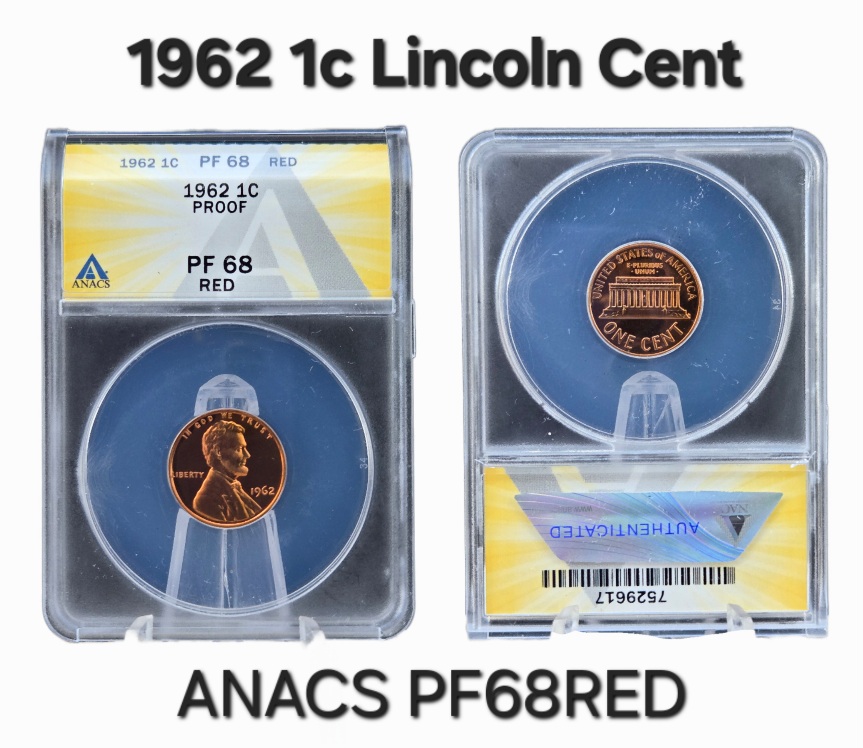1962 Lincoln Cent, Proof – ANACS PF68RED
$32.00
You’re looking at a 1962 Lincoln Cent Proof ANACS PF68RED. Let’s break down what that means for its characteristics and potential value:
- 1962 Lincoln Cent: This refers to the year the coin was minted.
- Proof: This is the key distinguishing factor. Proof coins are specially struck for collectors, not for circulation. They are typically produced with polished dies and planchets (coin blanks), resulting in a sharp strike, often with mirrored fields (the flat areas) and frosted devices (the raised design elements). They are usually handled with extreme care to preserve their pristine surfaces.
- The 1962 Proof Lincoln Cent was minted in Philadelphia and had a mintage of 3,218,019. While a significant number, this is far less than business strike coins.
- ANACS: This is America’s Oldest Grading Service. ANACS is one of the top-tier third-party coin grading companies, similar to PCGS and NGC. They authenticate coins and encapsulate them in a tamper-evident holder (a “slab”) with the assigned grade.
- PF68: This is the grade assigned on the Sheldon grading scale (Proof 0-70).
- PF (Proof): Indicates it’s a proof strike.
- 68: This is a very high grade, signifying “Superb Gem Proof.” A PF68 coin is nearly flawless, exhibiting full original luster and strike. It will have very few, if any, minor imperfections that are only visible under close scrutiny. It’s a highly desirable grade for collectors.
- RED: This color designation for copper coins means the coin retains at least 95% of its original vibrant red copper color. For proof copper coins, maintaining full red color is crucial for maximizing value and desirability.
Value:
A 1962 Lincoln Cent in ANACS PF68RED is a high-grade example of a relatively common proof issue. While not exceptionally rare, its high grade and full red color make it a premium coin.
Based on recent sales data from various auction sites and price guides, you can expect the value of a 1962 Lincoln Cent ANACS PF68RED to be in the range of $20 to $60. The specific value can fluctuate depending on:
- Eye Appeal: Even within the same grade, the coin’s visual attractiveness (e.g., strength of contrast between fields and devices, lack of toning or spots) can influence its desirability and price.
- Cameo/Deep Cameo (CAM/DCAM) Designation: Some proof coins exhibit a strong contrast between the mirrored fields and frosted devices. If your coin had a “Cameo” (CAM) or “Deep Cameo” (DCAM) designation on the ANACS label, its value would likely be higher, potentially reaching $75 – $150+ for a strong DCAM. Your description does not include this, so we assume it’s a regular proof finish.
- Market Demand: The current demand from collectors for this specific coin can influence recent sale prices.
In summary, you have a beautiful, high-grade 1962 Proof Lincoln Cent. It’s a nice addition to any collection, especially for those seeking top-tier examples of common issues.

